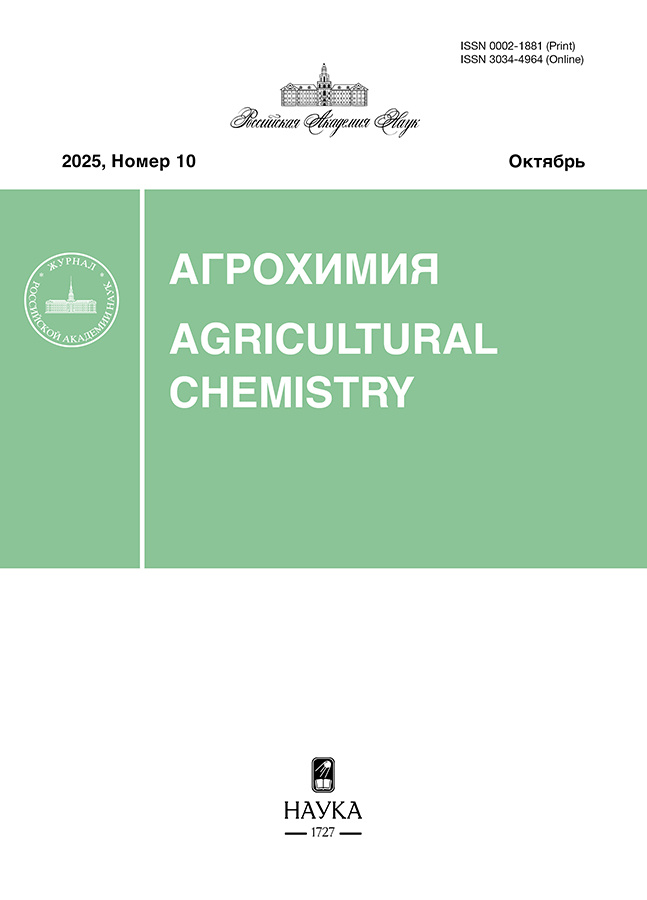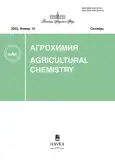Исследовали содержание, особенности накопления и распределения рудных (Pb, Zn, Cu) и сопутствующих (Cd, Fe, Mn) химических элементов в биомассе люцерны серповидной, растущей на хвостохранилищах Алтайского ГОКа и в его окрестностях. Микроэлементы в растительных пробах, а также в образцах грунта и в верхних горизонтах почв определяли методом атомной абсорбции на спектрометре Квант-2мт. Установлено, что верхние слои субстратов старого и нового отвалов отличались повышенным относительно ОДК и фона содержанием Zn, Cu, Pb, Сd. Большинство образцов люцерны отличались повышенным содержанием Zn (50–135 мг/кг сухой массы). Содержание Cu (6.5–25.9 мг/кг) и Cd (0.061–0.989 мг/кг) было больше фонового, но редко превышало зарубежные нормативы для кормовых трав. В люцерне старого хвостохранилища АГОКа содержание Pb (11.3–18.5) превышало его содержание в люцерне, растущей на новом отвале (1.5–7.1 мг/кг), хотя содержание Pb в субстратах различалось несущественно. Содержание Fe в люцерне изменялось, как правило, от 69 до 234 мг/кг, но на нерекультивированном отвале достигало 461 мг/кг, что считается избыточным. Марганец по содержанию в люцерне отвалов АГОКа и окрестностей (<39 мг/кг) был признан дефицитным микроэлементом. Наиболее высокие содержания Zn, Cd, Cu, Pb в корнях люцерны и в верхнем слое субстрата были определены в пункте на поверхности нового отвала вблизи стихийной свалки, как пример сопряженного воздействия 2-х факторов загрязнения окружающей среды. Высокие концентрации Zn и Cd в люцерне, растущей на почвоподобном субстрате нового рекультивированного отвала, можно объяснить дополнительным поступлением токсикантов с поверхности листовой пластинки из пыли, оседающей на ней, а также поглощением металлов корнями из материала самого отвала, погребенного под почвоподобным грунтом. Интенсивное поглощение люцерной Fe и Pb на старом отвале обусловлено кислой реакцией среды субстрата, увеличивавшей мобильность металлов и их доступность для растений.
 3-11
3-11


 12-23
12-23


 24-30
24-30


 31-39
31-39


 40-47
40-47


 48-51
48-51


 52-59
52-59


 60-68
60-68


 69-76
69-76


 77-85
77-85


 86-95
86-95


 96-104
96-104












